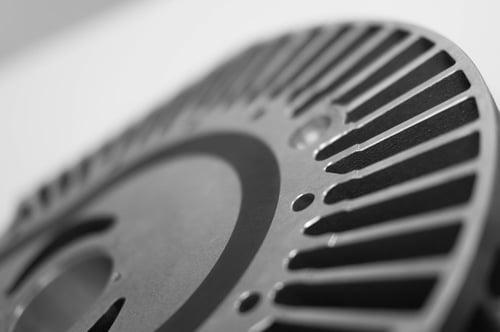Top safety essentials in metal casting (part 2)
Published - 29th Mar 2018
In this second blog on safety in metal casting, we look at how machinery and tooling are managed in our day-to-day activities, and how we minimise the impact of our activities on the local area.
Tooling and machinery
Our tools are, of course, inspected and serviced regularly. As an example, our hand tools must go through regular vibration tests to reduce the risk of vibration white finger – an industrial injury triggered by continuous use of vibrating hand-held machinery.
Many tasks are carried out manually by our foundry team, although we use some specialised equipment for larger jobs. One example is the roll-over machine, which is used in the production of large heavy sand moulds. This task is not carried out manually due to the risk of injury in carrying these heavy loads. However, the roll-over machine presents some health and safety challenges due to its size and the scale of the moving parts. So, it is guarded off in a designated area of the foundry and our operators are trained to understand the risks posed when the machine is in operation.
Finishing
Tools and equipment used in our finishing work also need to be monitored just as carefully. One example is our shot blasting machine, which is used to clean cast components and prepare them for further treatment. In shot blasting, steel balls (shots) are accelerated towards a casting at high speed in an enclosed cabinet. Our shot blasting machine is regularly checked by external assessors and, of course, serviced regularly – in common with all equipment.
Our operators load this machine manually. All staff take part in periodic manual handling courses to ensure that they are carrying out this and other tasks in the right way to prevent injury.
Another finishing technique, linishing, is used to remove excess material from cast components. This operation generates considerable dust, so our operators must wear appropriate face protection and the work area also needs to have good ventilation, filtration and extraction in place.
Fettling is another interesting example. This is carried out to trim the rough edges from a casting, but it also produces significant dust. We use a novel ‘wet scrubber’ filtration unit that turns dust emissions into a wet sludge to remove these particles from the atmosphere.
The local environment
In terms of the wider environment, we strive to manage our emissions responsibly and reduce any impact on the local area in which we operate.
Independent inspectors run checks on our emission levels every two years and the local council regularly visits our facilities to verify that we are meeting the requirements of our licence to operate.
Haworth Castings only operates during normal hours so there is no noise disturbance at night. Whatever the activity, operating safely and with due regard for our neighbours is a top concern.
We are very proud of our excellent health and safety record, but we are not complacent. We strive to deliver continuous improvements in this area and ensure that any risks and hazards are minimised as far as possible.
If you would like to discuss any aspect of our casting work, please call us today on +44 (0)1794 512685 or email us: sales@haworthcastings.co.uk




